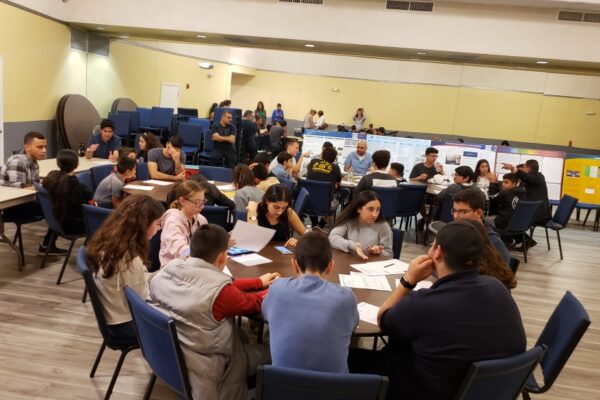Data science is like the heartbeat of modern innovation, pumping insights through industries and transforming how we live, work, and dream. From healthcare to e-commerce, the way we harness data is evolving faster than a toddler chasing a shiny object. I remember my first dive into data science—sitting in a cramped office, staring at spreadsheets, trying to predict customer churn for a small startup. It felt like cracking a code, but today’s tools and trends make that experience look like a flip phone in a 5G world. Let’s explore the top nine data science trends for 2025-2026 that are set to redefine the field, backed by real-world applications and a sprinkle of optimism for what’s next.
1. Generative AI Becomes a Staple
Generative AI is no longer just a buzzword—it’s the coworker who’s always got a clever idea. By 2025, it’s expected to be a cornerstone of data science, with 45% of IT budgets earmarked for it, according to the AWS Generative AI Adoption Index. From creating personalized marketing content to generating synthetic data for training models, this tech is reshaping workflows across industries.
Why It Matters
Imagine a hospital using generative AI to simulate patient outcomes or a retailer crafting unique product descriptions at scale. It’s about efficiency and creativity, but there’s a catch—only 13% of tech CEOs have a solid plan for implementation, per an MIT survey. The challenge is balancing hype with practical use.
Tools to Explore
Tools like DALL·E 3, GPT-5, and Stable Diffusion are leading the charge. Check out platforms like Hugging Face for open-source models to kickstart your generative AI journey.
2. TinyML for Edge Computing
TinyML is like teaching a firefly to think—it’s machine learning squeezed into tiny, low-power devices like IoT sensors. This trend is exploding for edge computing, where data processing happens close to the source, reducing latency and bandwidth use.
Real-World Impact
Picture a smart thermostat predicting your energy needs or a wearable device monitoring heart health in real-time. TinyML makes this possible without constant cloud reliance. It’s a game-changer for industries like healthcare and smart cities.
Getting Started
Explore frameworks like TensorFlow Lite or ONNX for deploying TinyML models. They’re lightweight and perfect for edge devices.
3. Explainable AI (XAI) Gains Traction
As AI systems get smarter, people want to know how they think. Explainable AI focuses on making AI decisions transparent, building trust and ensuring compliance with regulations.
Why Transparency Rules
I once worked on a project where a client rejected an AI model because they couldn’t understand its logic. XAI solves this by making models interpretable, especially in sensitive fields like finance and healthcare. It’s about fairness and accountability.
Tools and Resources
Look into libraries like SHAP and LIME for XAI. They help visualize model decisions, making it easier to explain why your AI flagged a loan application as risky.
4. Predictive Analytics Powers Up
Predictive analytics is like having a crystal ball, but powered by machine learning and big data. It’s about forecasting trends, from customer behavior to market shifts, with unprecedented accuracy.
Business Applications
Retailers like Amazon use predictive analytics to suggest your next purchase, while insurers assess risks with precision. The market for predictive analytics is projected to hit $28.1 billion by 2026, growing at a 21.7% CAGR.
Best Tools for Predictive Analytics
- Python (Scikit-learn, XGBoost): Robust for building predictive models.
- Tableau: Great for visualizing predictions.
- RapidMiner: User-friendly for non-coders.
5. AutoML Democratizes Data Science
Automated Machine Learning (AutoML) is like giving everyone a magic wand to wield ML without a PhD. It automates model selection, tuning, and deployment, making data science accessible to non-experts.
Who Benefits?
Small businesses and startups can now leverage ML without hiring a data scientist. I saw a local bakery use AutoML to optimize inventory, cutting waste by 20%. It’s about empowering everyone to tap into data’s potential.
Top AutoML Platforms
| Platform | Key Feature | Best For |
|---|---|---|
| Google AutoML | Seamless Google Cloud integration | Cloud-based projects |
| DataRobot | End-to-end automation | Enterprise solutions |
| H2O.ai | Open-source flexibility | Budget-conscious teams |
6. Edge Computing Meets IoT
Edge computing and IoT are like peanut butter and jelly—better together. Processing data at the source (like in self-driving cars or smart factories) reduces latency and boosts real-time decision-making.
Why It’s Hot
By 2025, global spending on edge computing is expected to hit $232 billion, with a 13.1% increase from 2022. Think autonomous vehicles analyzing road conditions instantly or smart cities managing traffic flow.
Where to Start
Check out AWS IoT Greengrass or Azure IoT Edge for building scalable edge solutions. They’re designed to handle the flood of data from IoT devices.
7. Quantum Computing Enters the Scene
Quantum computing sounds like sci-fi, but it’s creeping into data science. It promises to solve complex problems—like optimizing supply chains or simulating molecular structures—faster than classical computers.
The Quantum Leap
While still in its infancy, companies like IBM and Google are investing heavily. I chatted with a researcher who believes quantum computing could cut drug discovery time in half by 2030. It’s a trend to watch.
Resources to Explore
- IBM Quantum Experience: Free access to quantum computing tools.
- Qiskit: An open-source framework for quantum programming.
8. Data Democratization Breaks Silos
Data democratization is about making data accessible to everyone in an organization, not just the tech wizards. It’s like opening the library doors wide so anyone can grab a book.
Why It’s a Big Deal
When I worked at a retail firm, data was locked in IT’s vault, slowing decisions. Democratization tools like Snowflake let teams access insights instantly, boosting efficiency. 80% of business leaders say open data improves decision-making.
Tools for Democratization
- Snowflake: Cloud-based data sharing.
- Power BI: User-friendly dashboards.
- Tableau: Interactive visualizations for all.
9. Ethical AI and Bias Mitigation
As AI grows, so does the need for ethics. Mitigating bias in models is critical to ensure fairness, especially in hiring, lending, and criminal justice.
A Personal Note
I once saw a recruitment algorithm favor male candidates because it was trained on biased data. Ethical AI focuses on fixing these issues, ensuring models are fair and transparent. It’s not just tech—it’s about doing right by people.
How to Implement
Use tools like Fairlearn or AI Fairness 360 to audit and adjust models. Training teams on ethical AI principles is also key.
Comparing Key Trends
| Trend | Industry Impact | Maturity Level | Key Challenge |
|---|---|---|---|
| Generative AI | Marketing, Healthcare | High | Practical implementation |
| TinyML | IoT, Smart Devices | Emerging | Hardware limitations |
| Explainable AI | Finance, Healthcare | Growing | Balancing accuracy and clarity |
| Predictive Analytics | Retail, Insurance | Mature | Data quality |
| AutoML | Small Businesses, Startups | Growing | Customization limitations |
Pros and Cons of Top Trends
- Generative AI
- Pros: Boosts creativity, automates content creation.
- Cons: Risk of over-reliance, ethical concerns.
- TinyML
- Pros: Low latency, energy-efficient.
- Cons: Limited processing power.
- Ethical AI
- Pros: Builds trust, ensures fairness.
- Cons: Can reduce model accuracy.
People Also Ask (PAA)
What is the future of data science in 2025?
The future is bright, with trends like generative AI, TinyML, and quantum computing driving innovation. Expect more automation, ethical focus, and real-time analytics.
How can I learn data science in 2025?
Start with free courses on Coursera or edX, focusing on Python, SQL, and ML. Platforms like Kaggle offer hands-on projects to build skills.
What are the best tools for data science?
Python (Pandas, Scikit-learn), R, Tableau, and AutoML platforms like DataRobot are top picks. Cloud tools like AWS and Snowflake are also essential.
Where can I find data science jobs in 2025?
Check LinkedIn, Indeed, or specialized platforms like Kaggle for job listings. Data science roles are projected to grow by 30% by 2025.
FAQ Section
What skills are most in-demand for data scientists in 2025?
Python, SQL, and machine learning top the list, with 69% of data scientist job postings requiring ML skills. Communication and data visualization are also crucial.
How does generative AI impact data science?
It automates tasks like content creation and data synthesis, but requires human oversight to ensure accuracy and relevance.
Is data science a good career in 2025?
Absolutely. With 11 million jobs projected by 2026 and salaries ranging from $70,000 to $150,000+, it’s a lucrative field with vast opportunities.
What industries benefit most from data science trends?
Healthcare, finance, retail, and smart cities lead the pack, leveraging predictive analytics, edge computing, and AI for smarter decisions.
How can businesses adopt these trends?
Start small with tools like AutoML or Tableau, invest in training, and partner with cloud providers like AWS or Snowflake for scalable solutions.
Wrapping Up
Data science in 2025-2026 is like a rocket ship—fast, powerful, and headed for new frontiers. From generative AI crafting personalized experiences to TinyML powering smart devices, these trends are reshaping how we use data. Whether you’re a business owner, a budding data scientist, or just curious, now’s the time to dive in. Explore tools, experiment with platforms, and stay ahead of the curve. The data revolution waits for no one—grab your seat and enjoy the ride!





